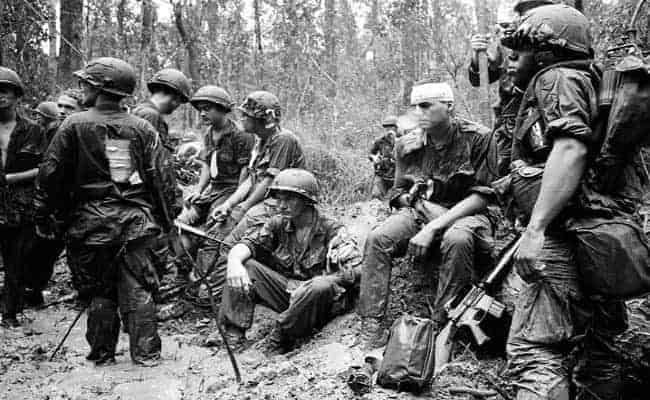A period of war is always a time of confusion and anger. For those who were initially in favor of the Vietnam war, as well as those who played a part on the frontlines, the American public was (and perhaps never will be) truly informed about the events that took place. According to many of those who feel betrayed and unsupported to this day, the media also added to the widespread doubt and chaos of the era.
After 50 years, any cover-ups or misinformation about Vietnam still take precedent over the actual events that occurred. And as we look back on this twenty year period that ended in thousands of deaths and countless more wounded, we can only rely on the facts we know for certain, while remaining vigilant in finding answers to things we’ve yet to clarify.
7. The US Entered the War in 1954… Or Did They?

Evidence suggests that the United States only sent over supplies and advisors before 1965. Before French Indochina fell, the end of World War II led to an independent Democratic Republic of Vietnam for some time, under the direction of President Ho Chi Minh.
But just as Minh realized that the restoration of French rule was becoming a priority for the Western Allies, Chinese advisors as well as Soviet equipment started flowing in North Vietnam. And while Dien Bien Phu marked the victory of the Vietnamese over the French, the country would ultimately end up divided. Therefore, in 1954, an insurgency came into play, but was quickly upended by the new South Vietnamese government under the control of Ngo Dinh Diem, leading to a society on the brink of war and gaining the attention of the US.
6. 1963 Was a Year of Two Presidential Deaths, in America and South Vietnam

Any ideas of containment in the country swiftly became a dream. President Diem was shot in an armored vehicle on November 2, 1963, at a time when there were already 16,000 U.S. advisors in Vietnam. US President Kennedy and the Secretary of Defense Robert McNamara were both in an uproar over the news, believing that the US government played a role in the responsibility for his death.
And their upset would soon become clearer, as the Pentagon Papers leaked information stating ties between the U.S. and Diem over-throwers. Adding more fuel to the fire, the U.S. government gave the generals in Vietnam their approval to start planning a coup.
And within twenty days, Kennedy himself would be shot.

